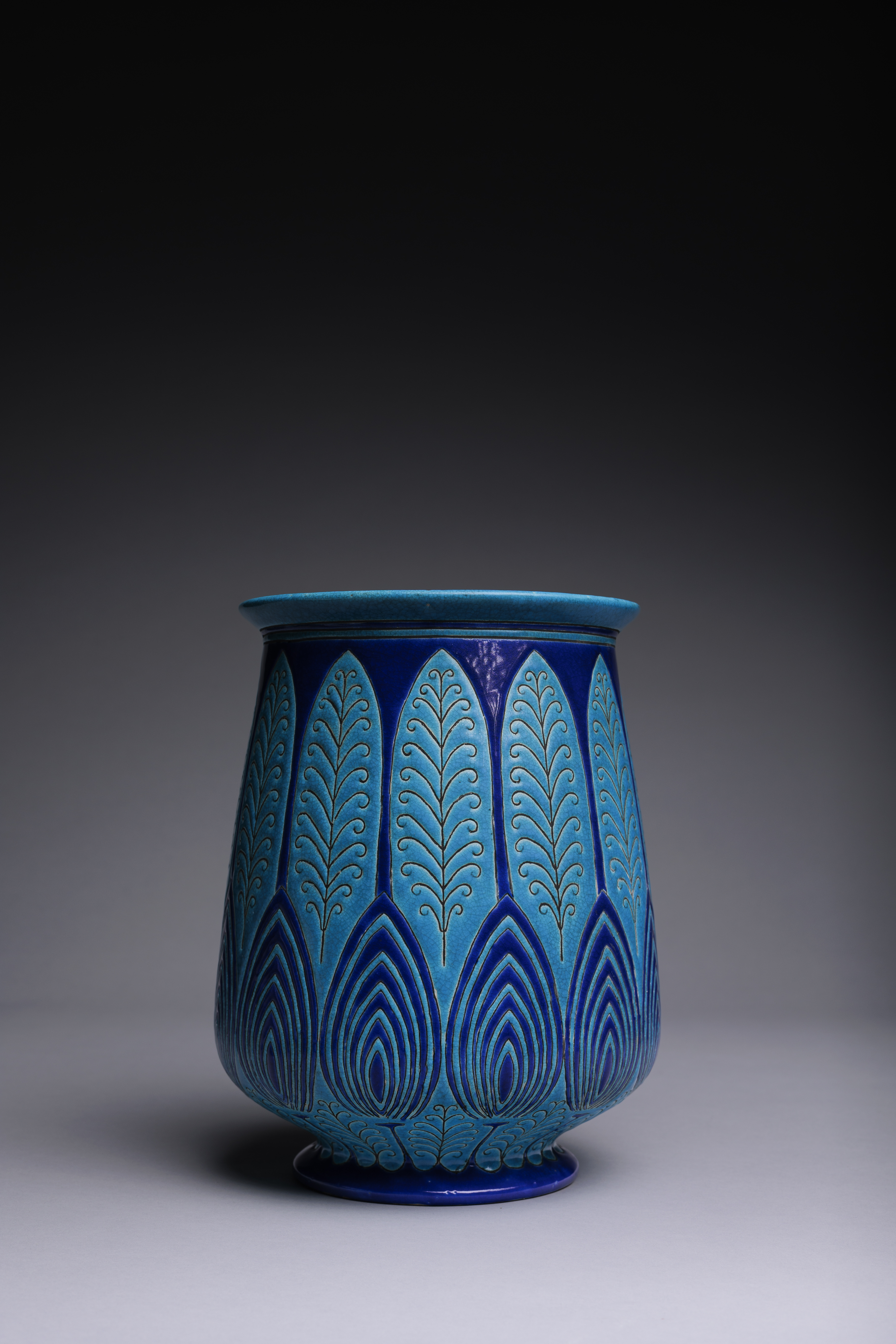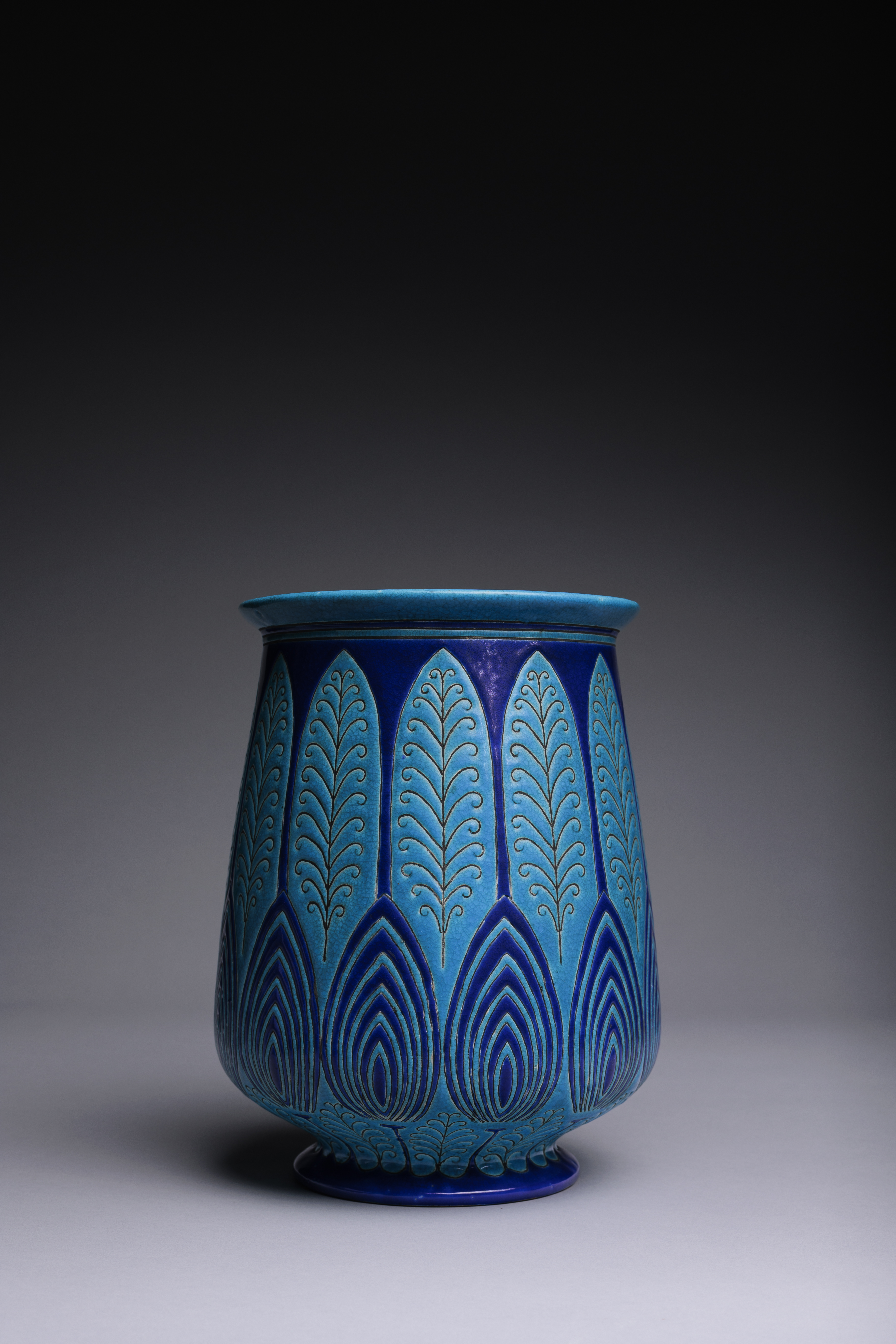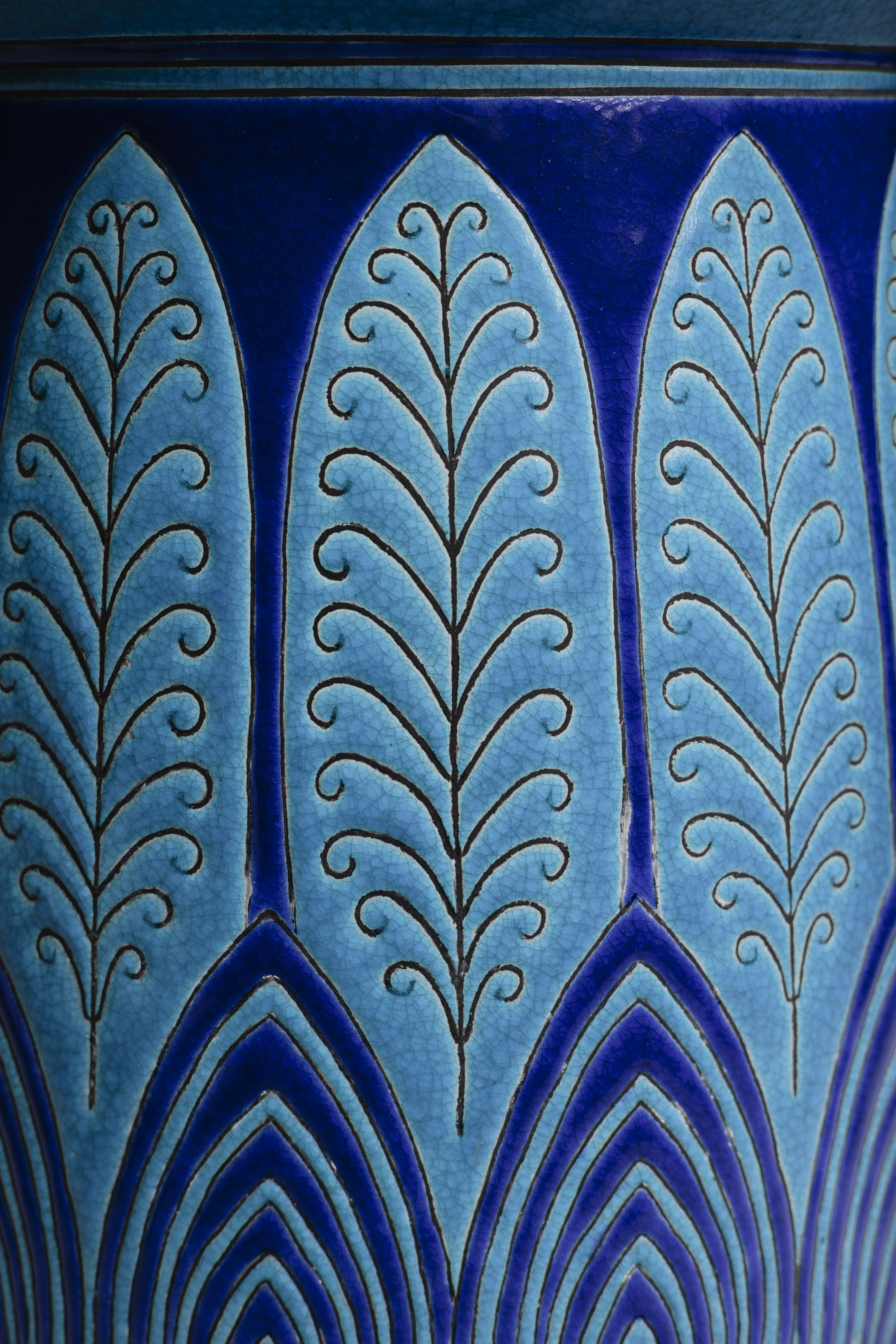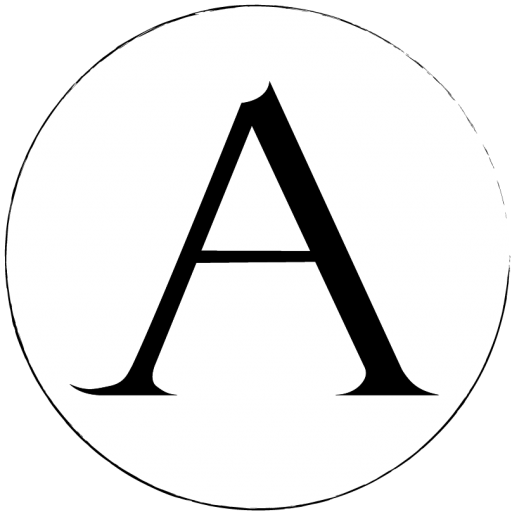Essay
The Longwy faiencerie was established in 1798 near the meeting point of the borders of France, Belgium, and Luxembourg. The factory is known for its émaux, brightly colored enamels (the most famous of which is a striking turquoise bleu) that often become cracked, or “crazed,” during firing. The émaux were used primarily in imitation cloisonné decoration which was developed around 1870 to mimic the cloisonnés of China and Japan.
Longwy’s famed relief-enameled cloisonné is on full display on this jardiniere. In this technique, the artist would apply the outline of the decoration in black paint, then painstakingly fill each “reservoir” with liquid enamel colors to create a bubble-like 3-D effect. Each Longwy piece is extremely tactile and bold, and this stunning turquoise jardiniere is no exception. The design and color was inspired partly by Egyptian blue-glazed faience with underglaze black decoration, and partly by the ‘Persian blue’ glaze of Islamic pottery.
The jardiniere was part of a special line for the Atelier Primavera, the in-house design studio in the Paris department store Au Printemps. The atelier, created in 1912, aimed to provide affordable modern French design to middle-class consumers. It was the first time a Parisian magasin developed its own line of products. Primavera contracted production to craftsmen, designers, and manufactories, hence Longwy’s association with the studio. Primavera flourished in the Art Deco period, and Longwy’s Art Deco ceramics like this jardiniere certainly fit well within that environment.
BT
Condition
Excellent. Characteristic Longwy allover crazing. Some minor spots of glaze separation.
For a detailed condition report, please contact us.
References
Literature
Alain-René Hardy, Primavera 1912-1972: Atelier d’Art Du Printemps. Shape illustrated fig. 710, 714.
D. Dreyfus, Emaux de Longwy (Paris 1998). Shape illustrated p. 23.
The Longwy faiencerie was established in 1798 near the meeting point of the borders of France, Belgium, and Luxembourg. The factory is known for its émaux, brightly colored enamels (the most famous of which is a striking turquoise bleu) that often become cracked, or “crazed,” during firing. The émaux were used primarily in imitation cloisonné decoration which was developed around 1870 to mimic the cloisonnés of China and Japan.
Longwy’s famed relief-enameled cloisonné is on full display on this jardiniere. In this technique, the artist would apply the outline of the decoration in black paint, then painstakingly fill each “reservoir” with liquid enamel colors to create a bubble-like 3-D effect. Each Longwy piece is extremely tactile and bold, and this stunning turquoise jardiniere is no exception. The design and color was inspired partly by Egyptian blue-glazed faience with underglaze black decoration, and partly by the ‘Persian blue’ glaze of Islamic pottery.
The jardiniere was part of a special line for the Atelier Primavera, the in-house design studio in the Paris department store Au Printemps. The atelier, created in 1912, aimed to provide affordable modern French design to middle-class consumers. It was the first time a Parisian magasin developed its own line of products. Primavera contracted production to craftsmen, designers, and manufactories, hence Longwy’s association with the studio. Primavera flourished in the Art Deco period, and Longwy’s Art Deco ceramics like this jardiniere certainly fit well within that environment.
BT
For a detailed condition report, please contact us.
Alain-René Hardy, Primavera 1912-1972: Atelier d’Art Du Printemps. Shape illustrated fig. 710, 714.
D. Dreyfus, Emaux de Longwy (Paris 1998). Shape illustrated p. 23.
This item ships free to the continental US, and globally for a flat-rate fee of $150.
All objects are packed with utmost care by our team of expert fine art shippers. All items are shipped with parcel insurance.
For more information on our shipping policies, please visit our FAQ Page.








